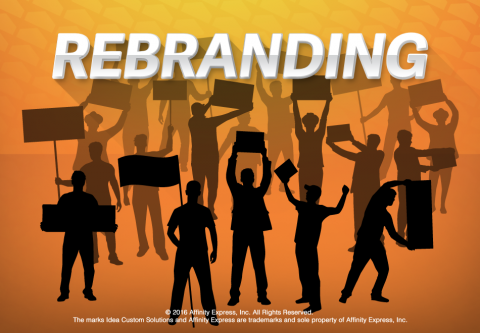Over the last year, Idea Custom Solutions has talked quite a bit about rebranding. To us rebranding is, at least for most companies, an exercise that involves more than just a new logo on a website and social media, or putting up new signage.
Rebranding has more to do with reaffirming or restating what your mission is as a business, non-profit or educational institution. At a minimum, changing up your brand — including your logo, your fonts, your color schemes and even the look and feel of your marketing collateral — creates conversation.

For example, the Peace Corps decided two years ago that it was essential to restate their purpose to make it loud and clear. The target of their initiative was to both the professionals they recruit and the areas of world they serve. Part of the Peace Corps' rebrand involved a reboot of their logo, into which they incorporated the peaceful image of a dove.
In the global non-profit's previous logo, the dove image was present but minimal and muted. With the increase in the focus on the dove, the Peace Corps said it wanted "a clean, modern look” while hoping to "inspire future generations who want to make a positive, lasting change in the world.”
By creating a conversation around its rebrand, the organization also helped reinforce the relevance of its mission while highlighting how the Peace Corps has changed since its inception in 1961.
Certainly there have been other rebrands in the business press that have created debate if not just conversation. Last year, for example, Google and music streaming service Spotify both rocked the technology world with updates, which started with the rollout of new logos.
An online magazine aptly called The Conversation asked "Google has a new logo — but why?" It pinpointed the fact that, if simplification was the designers' goal, then retaining the same array of four-colors was an unusual way to do it. Also, Google changed its serif font letter G in lowercase to a sans serif one in upper case.
"More practical? Yes. More exciting? Hardly. But much depends how it will be used," the post's author wrote. The article further noted that "Some companies change gradually as part of a long-sighted plan", making note that the marketers at 3M have changed their logo more than 30 times in the last hundred years.
Whether or not the greater business or design communities are unified on their opinions of the new looks, the Google rebrand last fall got lots of people talking. Fast Company claimed in an article that the world "mostly" loved the rebrand and new logo set, while Fortune simply said that the change was necessary to support the corporate reorganization and that the "meh response" to the new logo was good for the company simply because of the conversation the marketing move created.
"Some logo updates draw only brief murmurs of objection via social media," Fortune wrote in September, "while some evoke enormous backlash, like Tropicana’s 2009 brand and packaging overhaul." "In Google’s case," the author concluded, "the reason seems quite rational and in line with the direction that Internet usage and their business has been heading for some time."
Of course one could argue that, for large corporate concerns which conduct business worldwide, the stakes for logo changes are much higher. Packaging and printed materials, as well as outdoor and broadcast advertising are immediately affected by changes in colors, fonts and other minor elements of rebrands. For example, Forbes called Tribune Publishing's rebrand as tronc very "risky" earlier this month, while one pundit identified tronc's new logo font as, oddly, the same on used by children's TV network Nickelodeon.
Certainly, for any business thinking of a new logo, just winging it and hoping for a great reception isn't the smartest option. For small and medium-sized businesses, the most important thing is making sure your new logo looks good, projects the mission of your company and speaks to audience you most want to serve.
Your best bet is to look to your design partner's expertise, while providing the best in market intelligence about your industry and what differentiates your company so they can deliver a logo that will set you apart. Request our infographic: 29 Questions to Ask Your Design Resource and download our Rebranding Checklist to make sure you cover all the bases for your rebrand or when helping your customers.

Add new comment